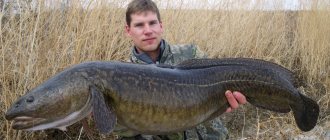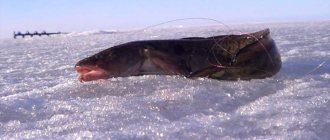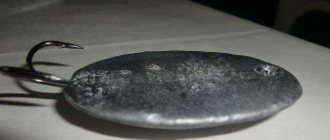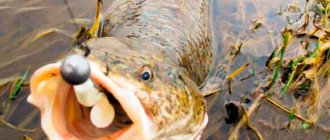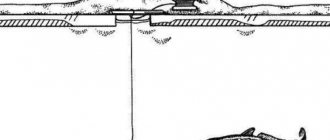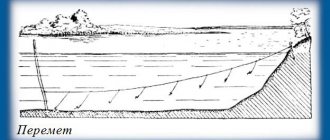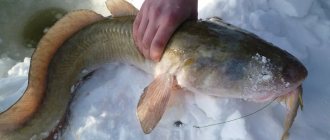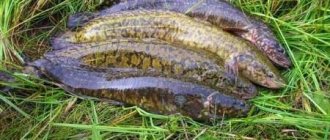Content
- Catching burbot in winter - methods and gear
- Burbot habitats
- About search and catching tactics
- Methods of catching burbot Zherlitsa (supplied)
- Fishing with a “snitch”
- Fishing with a line
From time immemorial, burbot has been the breadwinner and savior of the Siberian peoples during the hungry winter months. We ate with pleasure: we prepared delicious fish soup, pies and fed the dogs! “Trouble and help” - that’s what they called this slippery representative of cod in the outback. “Trouble” - because in any, even the most severe frost and snowstorm, we had to go out to the reservoir and check the “poke” and the lines, and “help” - because in the most difficult winter years we rescued and fed entire villages.
Catching Burbot with a Float Rod | Fishing in the Evening
Catching Burbot with a Fishing Rod is very interesting, since we see the bite visually. Everyone knows that many fish bite differently.
Burbot Bites in the Following Way:
He takes the bait and slowly pulls it to the bottom without doing any unnecessary actions. Burbot does not have such twitches as roach or crucian carp. The entire bite looks like a monotonous lowering of the Float Antenna under water.
It is best to catch burbot with a fishing rod in the evening in the coastal zone. The most important thing is to choose the right fishing point.
Burbot loves Shell Rock and Pebble Bottom. Finding such a place is very simple, and if you do find this point, you will not be left without a catch.
To catch burbot, you will need a Parabolic rod with a soft tip that is responsive to all manipulations;
Monofil with a diameter of 0.18 mm and no more should be used as the main fishing line;
You don’t have to install a leash, and if you do, use Fluorocarbon of a smaller diameter than the main line;
Nozzle Worm or a small piece of cut fish.
Catching burbot in winter - methods and gear
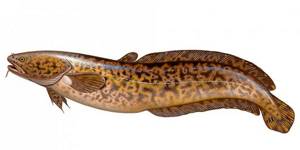
Back at school, reading fishing classics such as: L.P. Sabaneev, V.B. Sabunaev, S.A. Aksakov always noted to himself how they described Burbot, what impressive dimensions they called:
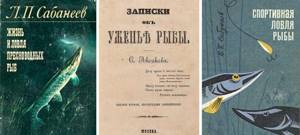
V.B. Sabunaev, “Sports Fishing”:
Quote: “Bubot reaches large sizes. In the Ob basin there are specimens up to 30 kg, and in Lake Onega - up to 20 kg. In water bodies in the middle zone, the weight of burbot rarely exceeds 1.5–2 kg, and the eggs are always larger than the molosniks.”
L.P. Sabaneev, “Life and fishing of freshwater fish”:
Quote: “The largest burbots are found in Pechora, Ob and especially the Irtysh, in which, according to Pallas, they reach 2 m in length.”
This never gave me peace. How is it possible, I live on the banks of the Great River, where there are 20-30 kilogram burbots and I have never caught them, and my grandfather, a spinning rod player, never caught them, and my friends only indulge in catching bass, and chubs on the ice, at best, are content with pikes and pike perch! How so, where is the omission? Why isn’t burbot fishing so widespread in our region?!
Of course, the classics in the old days described beautifully, throwing up their hands, the gigantic size of the fish. Today's reality is somewhat different; but the truth is that we have burbot and there are quite a lot of them , but only a few purposefully catch them!
Let's correct this misunderstanding.
The habitats of burbot are rivers, large and small, with fast currents and clean water. Burbot gravitates towards rocky ridges, rubble, and sudden changes in depth. It will be successful to choose a place close to holes, rifts and at the confluence of rivers. and streams Burbot does not tolerate silt on the bottom, so you should look for it exclusively on a hard, rocky clay or sandy bottom, near steep banks, on sand spits. In Belarus, such rivers as the Neman, Viliya, and Zap will be promising. Dvina, Pripyat and their tributaries. The further south you go, the smaller the burbot. In Belarus, the size of burbot rarely exceeds a kilogram size, usually 500-800 grams.
Burbot is active only in the dark, so it should be caught at night, and it is very important that the moon is hidden by clouds; the more clearly the moon is visible, the weaker the burbot bite. During the full moon, burbot is not caught at all. Ideally, a dark November night with low atmospheric pressure, wind, and drizzling rain. Bad weather and sudden changes in pressure activate its bite; in strong gusty winds and lashing rain, burbot is very active. On such a night, the peaceful inhabitants of the reservoir become numb, and they are devoured by this voracious predator. Burbot fishing continues after dark until midnight, after which you can go to bed - there will be no bite until 3-4 in the morning, when the burbot bite resumes until dawn.
The gear for catching burbot is the simplest: a donka, a feeder, a spinning rod converted for bottom fishing. Burbot is not afraid of rough equipment, and considering that you have to fish in complete darkness, it is better to use a stronger fishing line than a monofilament with a diameter of 0.45-0.5 will not be overkill, sometimes you can even use a nylon cord. https://ohota.by The size of the hook does not matter - its choice depends on the bait used. But it is better to use large carp hooks in order to injure smaller individuals less, preventing them from swallowing the hook deeply. You can take a heavy sinker, weighing 80-100 grams, to hold the bait in a fast current. A long cast is not needed; it will be enough to throw the tackle at 10-15 meters. Burbot takes bait only from the bottom, so it is important that the leash with the bait lies on the bottom. Having taken the bait, the burbot always swallows it deeply, securely sitting on the hook without hooking, and there are practically no escapes. as bait for catching burbot , pieces of fish, sliced fish meat (you can use carp), earthworms (very small burbots are often caught with worms), and live bait. A very good bait for burbot is freshly frozen sprat; it attracts this predator from a long distance. https://ohota.by The most versatile and almost win-win bait for catching burbot is live bait, preferably local.
To successfully fish for burbot, it is important to find its movement path. In search of food, burbot moves along permanent paths, rarely deviating from the route of its usual movement. If you place the tackle at random, away from the burbot path, you can sit all night in vain. The following strategy for catching burbot is successful - donks are placed at some distance in the evening, then in the morning, when checking the donks, the most catchy points are identified - the donks that have worked - and you should go there for the night.
From December 25 to February 25, due to spawning, burbot fishing is prohibited in Belarus. We don’t have much burbot, and after the past abnormally hot summer, it may have become even smaller; it tolerates high water temperatures very poorly. By the way, among our neighbors, in Ukraine, burbot is listed in the Red Book and its fishing is generally prohibited. So, if possible, treat these fish with respect. If possible, release small, not severely injured individuals. Happy burbot fishing – fishing that is unlike any other!
Burbot habitats
The most important thing in catching burbot is to find its habitat, and that magical burbot path along which every day, at dusk, it goes on its hunt. The search may take a lot of time and effort, but if you manage to find such places, you will definitely not be left without a catch. You can catch it in this “secret” place year after year until the topography of the reservoir changes dramatically and it stops attracting this fish.
Of course, the most effective and less expensive way is to find and get to know an experienced hirer who has already traveled this path. But will he be willing to share burbot stopovers and feeding trails in your area?
Perhaps it will be even more interesting for a true burbot hunter to solve this riddle himself, find the fish on his own and enjoy consistent results. To start an independent search, you need to know the places that are theoretically suitable for burbot to live and feed.
So, burbot loves clean, running water. You should not look for it in the river on a muddy bottom or in standing water. The best habitats are sandy, pebble soils with boulders at the bottom, rocky rubble! A deep-sea snag with running water, and nearby there are exits to spits and shallows. Burbot is often found on the fairway, behind some kind of shelter that protects it from estrus. But in general, it is recommended to install vents at depths of 0.5 to 4 meters, on spits, in places where the main flow weakens and turns into lulls, on the border of reverse currents.
The most active biting of burbot occurs before and after spawning. Spawning takes place at a water temperature of about 1 degree during the coldest winter period. During spawning, the fish practically does not feed, keep this in mind. Pre-spawning and post-spawning zhor are clearly expressed. During these periods, it is recommended to catch it purposefully.
Burbot spawning
Burbots go to spawning grounds in late November. Spawning takes place in the upper reaches of rivers. Requirements for spawning sites: sand and pebble bottom, moderate current. During the spawning campaign, the fish makes itself known in places uncharacteristic for it. As the weather gets colder, the intensity of the bite decreases. Around mid-December, burbots become silent and spawn. Sexually mature individuals are those that have reached 3-4 years of age and are 12-20 centimeters in length. By the way, the size of females is larger than that of males. As a rule, spawning occurs at night. The optimal temperature for spawning is 2 degrees. Sub-zero temperatures have a positive effect on burbot spawning.
Prolonged thaws extend spawning until February.
Fertilized eggs mature in suspension. At the end of February, spawned burbots begin to actively peck. The productive period for anglers lasts until the water temperature rises to 12 degrees.
About search and catching tactics
For an effective search, we need to have at least 5 zherlits. The tactics are quite simple - we find a promising area that fits the criteria stated above, and begin to install vents perpendicular to the shore every 2-4 m (depending on the length of the area) from shallows to depth. We note the triggers, the depth from which the bites occurred, shift to this parallel and, in a checkerboard pattern, fish the zone more accurately.
Don’t despair if you don’t manage to find the magical burbot trails the first time; in each section of the reservoir, for various reasons known only to the fish, they can be extraordinary and incomprehensible at first glance. Try, move, drill, but remember that the emergence of burbot most often occurs closer to night, so be patient, you may need more than one day to examine a fairly small promising area. Sooner or later you will stumble upon a burbot trail, its habitat, and you will be generously rewarded.
What is the best time to catch burbot in the fall?
The best time to catch Burbot in the fall is, of course, at night and before sunrise.
I catch burbot on the Don starting at 22.00. I arrive early so that I have time to set up the gear before dark, which is something you can’t do for the sake of what you love.
In the morning, when the sun rises and slowly begins to warm up, and this moment comes around 9.00, then it’s worth changing the type of gear and switching to Float fishing for burbot. Only here the tackle with a float will be Specific.
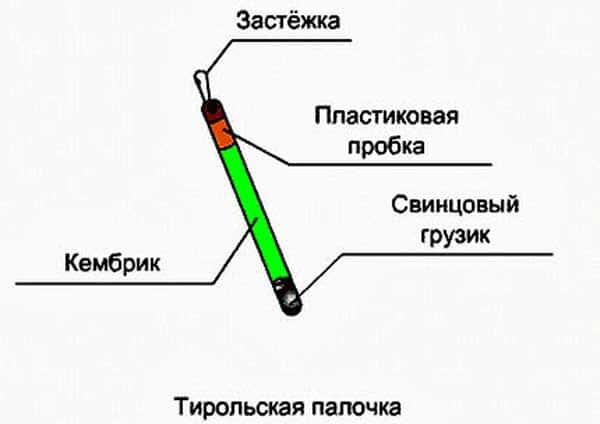
The float will be in the Lying position all the time. Finally, we attach a small Tyrolean stick; all advanced spinners know about it, so I won’t talk about it.
And so, we attach a fluorocarbon leash to the Tyrolean stick, at the end we place Hook No. 14 according to the Japanese classification and make a 2-3 Centimeter sub-hook from a small lead shot.
I use a bunch of earthworms as a bait, planting 3-4 pieces at once. I don’t just attach it, but in a ring, so the worm looks very appetizing and the burbot likes it.
When the bite on this tackle also subsides, I simply move to another promising point or experiment with baits and attractants.
In general, you understand that catching burbot in the Autumn is very simple, just understand this Specificity, and you will not be left without fish.
Catching Burbot in Autumn. Making Donok for Burbot | Video
Methods for catching burbot
Today we will talk about the two most common methods of catching burbot from ice:
- on zherlitsy, postavushki, “poke”. There are many names - the essence is the same!
- in a plumb line to the “snitch”. A special jig with a fish bait, which is tapped on the bottom, thereby attracting fish.
Zherlitsa (supply)
We will not mention the design of the vent itself in this article. There are a lot of them and each angler can choose the one he likes best. Beginner fishermen can buy a ready-made girder in a store, equip it correctly - and this will not be the worst option. Burbot is so unpretentious to the quality of tackle that it can be caught simply on a rope with a nylon leash and a hook, as they did in the villages. This hunter has poor eyesight, but his sense of smell is good. When searching for prey, it primarily focuses on the smell and lateral line, and only then on the organs of vision.
I repeat, the thickness of the line and the delicacy of the tackle for burbot are of secondary importance, so I suggest using a main line with a diameter of 0.4 mm and a leash of 0.3. They are necessarily connected to each other by a swivel and a clasp, into which a sliding weight, like an “olive,” rests, sliding freely along the fishing line. We select the weight of the sinker depending on the conditions: depth and current from 50 to 200 grams. The hook is a medium-sized double, it is better to select it based on the size of the live bait you caught. In our Ob realities, I would recommend using a soft tungsten leash so that the pike does not feed on your live bait with too much impunity. In addition, the leash simplifies the installation of live bait with a hook. An important point should be taken into account when equipping the vent - the nozzle should be located near the very bottom!
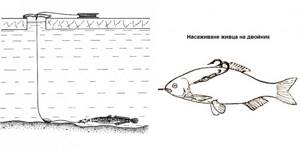
I recommend rigging live bait as follows. We push the leash through the mouth, bring it out behind the gill cover and thread the double into the loop of the leash, hooking it behind the back of the fry. No knots, simple and works great. Especially in the current, the fry stands with its head in the current, so it is easier for it to remain active longer, experiencing less water resistance. There are different ways to attach live bait, you can familiarize yourself with them in our article and choose the one that suits you best.
The load should lie on the bottom, and not float in the water column - burbot is a bottom predator. After a bite, he usually swallows the bait very deeply. You can also use a large single hook, this will make it easier to remove it from the voracious mouth. I like the double rig, and if the burbot is swallowed too deep, I just unfasten the leash from the clasp and put on a new one. I recommend that novice fishermen use only one leash - this will prevent tangling and snagging on the hole when fishing.
Another interesting way of rigging, definitely worthy of attention, you can watch in this video:
Fishing with a “snitch”
The most effective fishing tactics will be to combine these two fishing methods. I loaded several baits with fry and sat next to me in the tent so that it wouldn’t get boring, playing with the bait in a plumb line.
The squealer came from the banks of the Yenisei, although this is not certain. The essence of the gear is simple - a powerful fishing rod, often just a baton stick (which also performs pacifying functions), a thick fishing line, at the end of a large jig-spoon (pictured) on the hook of which a piece of live bait is hung. The fishing technique is not complicated. We throw the bait several times near the bottom, lower it sharply, creating a knock and raising the mud from the bottom, and take pauses.
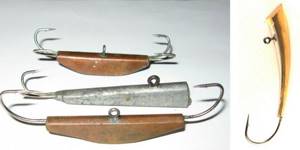
If you are unable to make such a spoon yourself, and there is nowhere to buy it (which is most likely), you can replace it with a heavy jig head. To extract more noise, it is recommended to hang small petals from rotating spinners through the winding ring. Noise play is one of the main factors attracting “blind” burbot.
Fishing with a line
We will not promote and teach how to catch burbot in this not entirely sporting way. It is allowed to use no more than 10 hooks per person, otherwise the net will be considered poaching gear. Let's leave this productive, but more tedious method of fishing to local village fishermen, for whom it is acceptable.
Why are Belarusian burbots so small?
Burbots living in Belarus are noticeably smaller in size than their relatives in northern Russia. Why? The small caliber of the Belarusian burbot is a consequence of:
There is no possibility of year-round feeding of burbots, which is associated with the European climate. The period of active feeding lasts five months - before and after spawning. And that's the best case scenario. Naturally, in this case, not the entire genetic potential in terms of growth rate is realized.
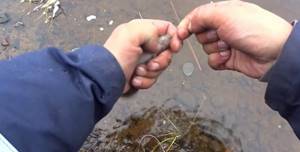
Low safety and survival rate of juveniles. The reason for this is that the eggs carried by the current become food for other fish. By the way, aquatic invertebrates feed on burbot eggs.
Eating burbot eggs in spawning grounds by roaches, perch, silver bream, and minnows. You probably didn’t realize that this is the reason for the weak bite of float fish during this period.
Reducing the number of reservoirs with optimal conditions for burbot spawning. This fish spawns in rivers and lakes with clean water. Industrial drains, cutting down trees along river banks, and land reclamation have a negative impact on the number of burbots.
Extermination of juveniles by fishermen due to the inability to release the caught burbot, since this fish swallows hooks very deeply. Therefore, to prevent juveniles from getting caught on the bottoms, it is necessary to increase the size of baits and hooks. If you fish with worms, then only with crawlers, which need to be placed on large hooks.
Nozzle for burbot
Everyone knows the fact that ruff is the favorite delicacy of burbot. It’s great if you can catch him before setting up the girders on time and in plenty. But most often you have to use whatever you have: spruce trees, roaches, perches - everything goes to the girders. You can indulge in experiments and try to catch crawlers or dung worms with a bunch, but where will you dig them in winter? And then bream and ides are unlikely to give you peace! Options with giblets and other meat/chicken by-products may also work, but here the initiative is in your hands! Live bait is usually the most consistent bait.

